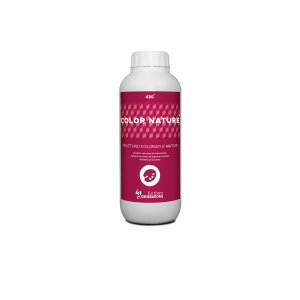Description
THE NEW CONCEPT OF CRACKING PREVENTION
-
Protect the cell wall
-
Improve the synthesis of cuticular waxes
-
Reduce leaf transpiration
CRACKING IN FRUIT AND VEGETABLES: Prevention and new defense criteria
Physiological mechanisms that have been studied to explain fruit cracking include fruit absorption of water, fruit osmotic potential, anatomical aspects of fruit cells (number and size), physical properties of the cuticle, and dynamics of fruit growth.
The first factor proposed to explain fruit cracking was excess of water absorbed by the roots or directly from the surface of the fruit.
The water absorbed through the roots during fruit ripening can play an important role in the development of cracking, because it induces an increase in the pressure of internal turgor of the fruit.
The cuticular membrane or cuticle is a semi-permeable hydrophobic membrane, composed of multiple layers of lipids that cover the aerial surfaces of plants. Its main function is to provide a barrier against pathogens and to decrease water loss. The cuticle has two main types of lipids: cutin and cuticular waxes. In cherries, cuticle waxes play an important role in water permeability. If the cuticle is removed, water intake increases significantly. The main components of vegetable cuticular waxes are very long chain fatty acids (VLCFA, typically C 20 – C 34) and their derivatives, including alkanes, aldehydes, primary and secondary alcohols, ketones and esters together with secondary metabolites, such as triterpenoids , sterols, tocopherols and phenolic compounds.
PRODUCT CHARACTERISTICS
The new concept of cracking prevention includes, in addition to the already widely known actions (use of calcium, silicates, etc.), the use of substances capable of improving the synthesis of cuticular waxes. The “Less-Cracking” commercial formulation contains a series of mono and polyunsaturated fatty acids and some alcohols essential for the synthesis of the lipids that make up the waxes. The product is also able to reduce leaf transpiration and, therefore, to improve the accumulation of calcium in the fruits. The use of the formulation in doses of 200 cc / hl, starting from the attached fruit phase, combined with specific calcium-based products (eg ZeroStress), can greatly improve the problematic management of cracking.



